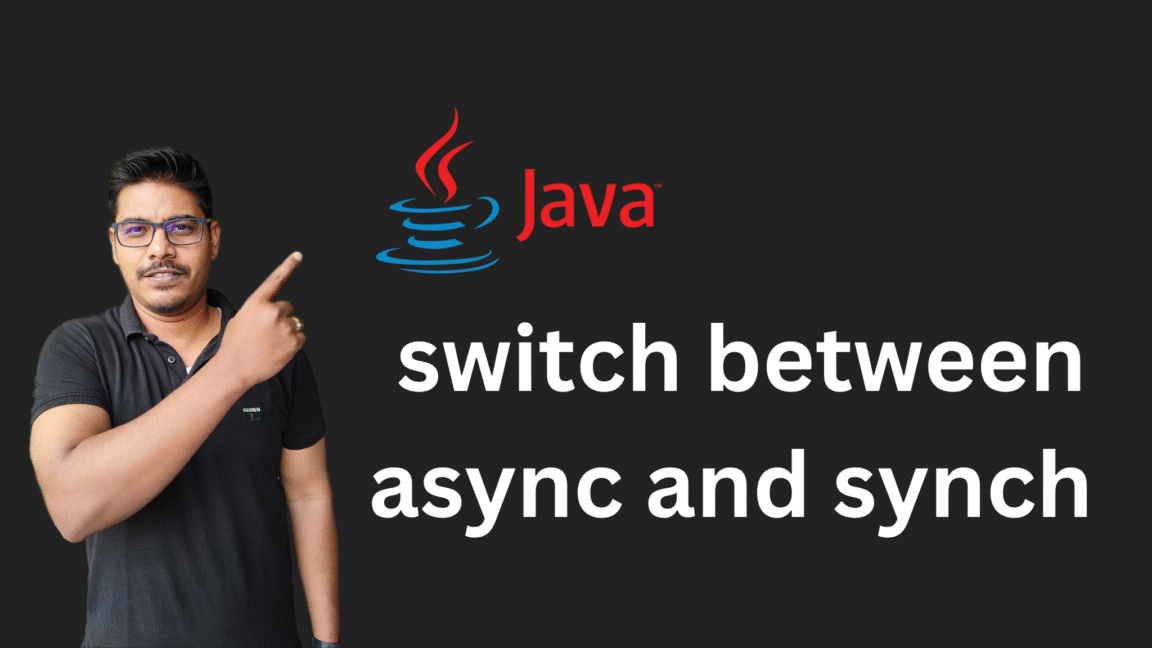Switching between synchronous (sync) and asynchronous (async) communication in Java-based microservices involves architectural, design, and implementation changes. Here’s a practical guide on how to approach this transition, the considerations involved, and common patterns used in the Java ecosystem.
Understanding the Communication Patterns
Synchronous Communication

- Typically uses HTTP/REST or gRPC.
- The calling service waits (blocks) for a response before proceeding.
- Easy to implement and debug, but can introduce bottlenecks and tight coupling between services156.
Asynchronous Communication
- Utilizes message brokers like Kafka, RabbitMQ, or ActiveMQ.
- The calling service sends a message and continues processing without waiting for a response.
- Enables loose coupling, higher scalability, and resilience, but is more complex to design and debug156.
Hybrid Approaches
How to Switch Between Sync and Async in Java Microservices
1. Identify the Use Case
- Use synchronous communication when immediate feedback is needed (e.g., payment confirmation).
- Use asynchronous communication for background processing, notifications, or when decoupling is desired (e.g., sending emails, order processing)256.
2. Refactor Service Interfaces
- From Sync to Async:
- Replace HTTP endpoints with message listeners (e.g., Kafka consumers, RabbitMQ listeners).
- Implement message publishing logic instead of direct service calls.
- Use correlation IDs or callback mechanisms if a response is eventually needed6.
- From Async to Sync:
- Replace message broker interactions with direct HTTP/gRPC calls.
- Ensure the called service is available and can respond within expected timeframes.
3. Update Communication Mechanisms
| Pattern | Technology (Java) | Example Implementation |
|---|---|---|
| Synchronous | Spring REST, gRPC | RestTemplate, WebClient, gRPC |
| Asynchronous | Spring Cloud Stream, JMS, Kafka | @KafkaListener, RabbitTemplate |
- For async, use libraries like Spring Cloud Stream or native Kafka/RabbitMQ clients to publish/consume messages.
- For sync, use Spring’s
RestTemplate,WebClient, or gRPC stubs for direct calls.
4. Handle Transactions and Consistency
- Async communication often requires patterns like Saga or Outbox to manage distributed transactions and eventual consistency7.
- Sync communication can rely on traditional request/response error handling and compensation logic.
5. Implement Error Handling and Retries
- Async: Use dead-letter queues, retry policies, and idempotency to handle failures.
- Sync: Use HTTP status codes, circuit breakers, and retries for transient errors56.
6. Testing and Observability
- Update integration tests to reflect the new communication pattern.
- For async, ensure observability with message tracing, logging, and monitoring tools.
Example: Switching from Sync (REST) to Async (Kafka) in Java
Original Synchronous Call:
java// Using Spring RestTemplate
ResponseEntity<OrderResponse> response = restTemplate.postForEntity(
"http://order-service/api/orders", orderRequest, OrderResponse.class);
Refactored Asynchronous Call:
java// Using Spring Kafka
kafkaTemplate.send("order-requests", orderRequest);
// Optionally, listen for a response on a different topic
Listening for Messages:
java@KafkaListener(topics = "order-responses")
public void handleOrderResponse(OrderResponse response) {
// Process the response
}
Key Considerations
- Hybrid Approach: You can support both sync and async by exposing both HTTP endpoints and message listeners in the same service, allowing clients to choose the interaction style17.
- Scalability and Decoupling: Async is preferred for high-throughput, loosely coupled systems. Sync is simpler but can limit scalability56.
- Complexity: Async introduces more complexity in error handling, message ordering, and eventual consistency.
How can I implement switching from async to sync in Java microservices






GIPHY App Key not set. Please check settings